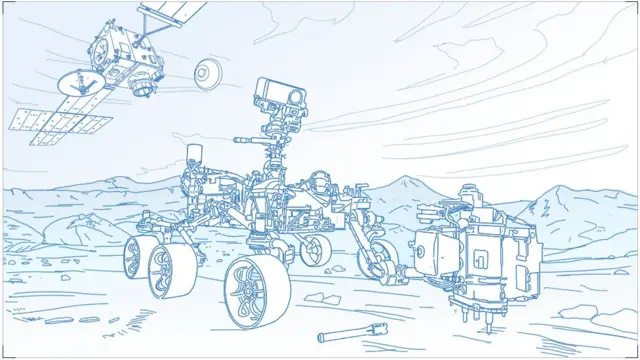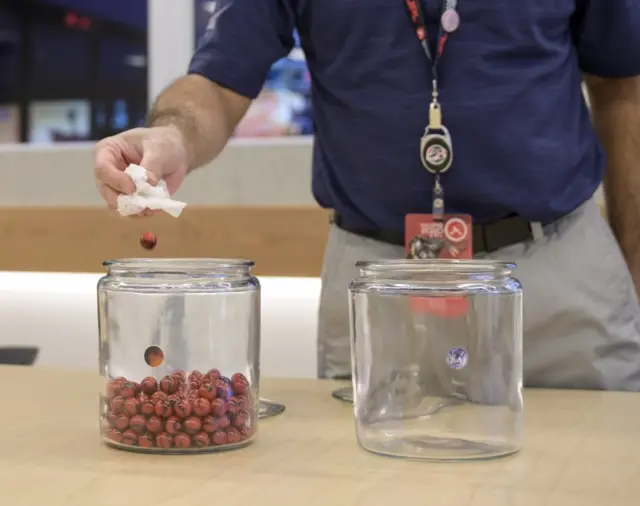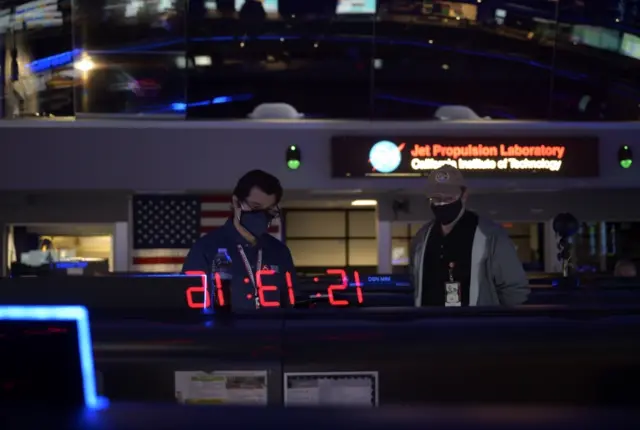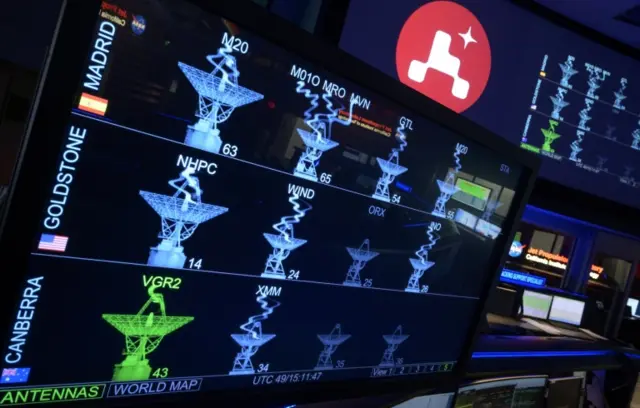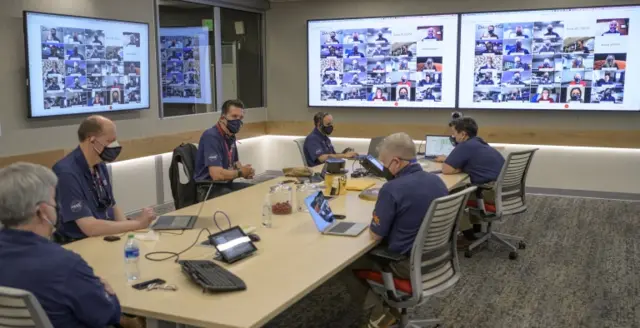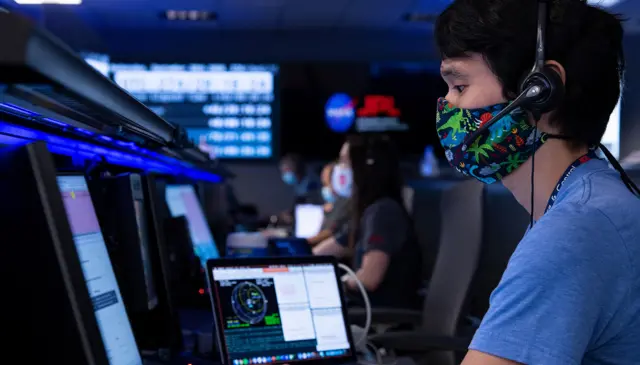Cruise stage separation now happeningpublished at 20:41 GMT 18 February 2021
With about 10 minutes, and 1,600km to go, the the ship has just jettisoned its cruise stage and attached fuel tanks.
It is now about to shed its ballasts, preparing it to make its entry into the Martian atmosphere.
